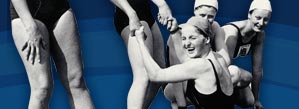Pharmacy
The introduction of the National Health Service created a fairer society. Access to health care was no longer limited by income. This is particularly important in terms of medicines.
The equivalent of around 4.5 million prescriptions were dispensed annually before the NHS. In those days, the pharmacist was known as the poor man’s doctor because those who could not afford to see a doctor went along to their ‘chemist’ instead.
By 1950 prescription numbers had risen to nearly 20 million. It is now over 80 million. To fill a prescription in those days the pharmacist compounded individual mixtures in his shop based on the prescription from the doctor and a Codex of medicines - the ‘recipe book‘. A lot of the medications were extracted from plants and apothecary scales were used to weigh the ingredients for the mixtures.
At that time there were very few drugs available from medicine manufacturers.
That all changed with the pharmaceutical industry developing new synthetic drugs. Scottish universities made a huge contribution in this area.
At the same time the pharmacist’s role was also changing. It became an all graduate profession in the late 1960s.
The community pharmacy contract in 1948 was primarily based on payment for dispensing medicines. We now have a contract which is all about the pharmacist’s role in caring for patients and making full use of their professional skills and expertise.
Almost all community pharmacies now have their own private area for patient consultations. Pharmacists can now prescribe a wide range of over the counter medicines as well as medicines previously restricted by law to traditional prescribers, such as doctors and dentists.
We have seen this development both in community pharmacies and in hospitals. Aberdeen pioneered a new system – the Aberdeen Kardex – offering a systematic approach to hospital prescribing. This produced a safe and effective way of prescribing medicines in Scottish hospitals and is still in use today.
Pharmacists have gone from being very distant cousins to close relatives in the NHS family and we will continue to develop that. You get the best outcomes when pharmacists, doctors and nurses work in close collaboration rather than competition, which is what used to happen in the early days.
We have also seen the welcome growth of prescribing committees at health board level. The Scottish Medicines Consortium grew out of this model.
It has been a significant success for the Scottish Health Service. It is recognised internationally as an innovative system for rapid and rigorous evaluation of new treatments so that patients can get the full benefit of new medicines as quickly as is safely possible.
We have seen a revolution over the last 60 years in the treatments for illnesses that were hitherto not treated well or not treated at all.
At the same time, the NHS in Scotland remains true to those founding principles. That means you will get the treatment you need without the fear and anxiety of cost which otherwise in some cases would financially cripple even the most affluent family.
That is something we can all be proud of.
Professor Bill Scott
Chief Pharmaceutical Officer

Patients in Scotland now benefit from a vast range of medicines through the NHS.
Some of these new medicines are very expensive – and can cost £20,000 or more over a year. Without the NHS people would have to pay either the full cost or a significant contribution towards the cost of their treatment.
Instead, today the cost of an NHS prescription to the patient is set at a standard charge – whatever the cost of the medicine being prescribed.
Looking to the future, the Scottish Government has pledged to abolish all prescription charges by 2011 truly reinstating the original founding principles of the NHS outlined by Bevan in 1948.
